Shankaracharya Jayanti commemorates the birth anniversary of the great Advaita Vedanta philosopher, Jagadguru Adi Shankaracharya. This sacred day honors his immense contributions to Sanatana Dharma, his revival of Vedic wisdom, and his teachings on non-dualism (Advaita), which continue to illuminate the path of seekers striving for self-realization and liberation (moksha). His life and works epitomize the triumph of knowledge over ignorance, guiding humanity toward the realization of the Supreme Truth.
In 2026, Shankaracharya Jayanti will be observed on Tuesday, April 21st. This auspicious day is marked by veneration, scriptural recitations, and discourses on his teachings. Devotees engage in prayers, meditation, and the chanting of Vedic hymns, seeking the divine blessings of Adi Shankaracharya for wisdom, spiritual clarity, and unwavering devotion to the path of truth.
Observing this sacred occasion fosters inner transformation, strengthens one’s spiritual resolve, and aligns the seeker with the eternal wisdom of the Vedas. Shankaracharya Jayanti serves as an inspiring reminder of the power of knowledge, self-discipline, and devotion in the pursuit of the highest realization- oneness with the Supreme Brahman.
Festival Date, Time, Muhurat & Tithi
Shankaracharya Jayanti will be observed on Tuesday, April 21, 2026.
Panchami Tithi (5th lunar day) of the Vaisakha month as per the lunar calendar.
1238th Birth Anniversary of Adi Shankaracharya
Key Timings for Shankaracharya Jayanti 2026:
Panchami Tithi Begins - 04:14 AM on Apr 21, 2026
Panchami Tithi Ends - 01:19 AM on Apr 22, 2026
Note: Sunrise and sunset vary by region and date due to India's geographical diversity. For exact timings, please refer to local astronomical data.
Significance & Importance of Shankaracharya Jayanti
Considered one of the greatest spiritual luminaries and philosophers in Hinduism, Adi Shankaracharya is revered as the savior of Vedic Dharma and a key proponent of Advaita Vedanta. His profound teachings on the nature of the Aatma (soul), Parmatma (divine soul), and Moksha (liberation) provided a deep philosophical foundation that continues to guide seekers on their spiritual journey. At a time when Hinduism faced immense challenges due to ritualistic excesses and external influences, Adi Shankaracharya’s teachings played a pivotal role in reviving and strengthening Sanatana Dharma.
His impact was so profound that he is regarded as one of the key figures who ensured the continuity and resurgence of Hindu traditions. Alongside other great philosophers such as Madhvacharya and Ramanujacharya, Adi Shankaracharya reinforced the philosophical depth of Hinduism. His exposition of the Upanishads, Bhagavad Gita, and Brahma Sutras laid the intellectual and spiritual foundation for Advaita Vedanta, which asserts that the individual soul (Jivatma) and the Supreme Soul (Brahman) are one and the same, and the perception of duality is an illusion (Maya). His works provided clarity to spiritual seekers, enabling them to understand and apply these profound truths in their own lives.
To restore the influence of Hinduism across Bharatavarsha, Adi Shankaracharya traveled extensively, engaging in spiritual debates (Shastrarthas) and dispelling misunderstandings about Vedic philosophy. As part of his mission to safeguard and propagate Sanatana Dharma, he established four monasteries (Mathas) in different corners of India. These include Jyotir Math in the North (Kashmir), Govardhan Math in the East (Jagannath Puri), Sringeri Math in the South, and Dwaraka Math in the West. These institutions continue to preserve and spread the Vedic teachings and serve as centers of spiritual learning and guidance.
A revered legend states that Bhagwan Vishnu himself appeared before Adi Shankaracharya at Badrinath, where he was instructed to consecrate a deity of Bhagwan Vishnu from the sacred Alaknanda River. This deity was enshrined in what is today known as the Badrinarayan Temple, one of the most important pilgrimage sites in Hinduism. This event symbolizes the divine connection and mission of Adi Shankaracharya, affirming his role as a spiritual reformer chosen to restore the essence of Hindu philosophy.
Teachings of Adi Shankaracharya
Destruction of ignorance leads to salvation
Adi Shankaracharya emphasized that ignorance (Avidya) is the root cause of suffering and bondage in the material world. Only through self-knowledge (Atma Jnana) and the realization of one's true nature as Brahman can one attain Moksha (liberation). He taught that the path to freedom lies in understanding that the world of duality is an illusion and that the individual soul is not separate from the Supreme Reality.
Charity must be done at the right time
He encouraged Dana (charity) as an essential virtue but stressed that it must be performed with sincerity, selflessness, and at an appropriate time. True charity is not merely giving wealth but includes offering knowledge, kindness, and service to those in need. He believed that giving without expectation of reward purifies the soul and brings one closer to spiritual progress.
Truth alone is the ultimate refuge
According to Adi Shankaracharya, Satyam (truth) is the highest principle that supports the universe. He taught that one must always adhere to truth in thought, speech, and action, as it aligns the soul with the eternal reality of Brahman. He believed that Dharma (righteousness) is built upon truth, and those who live truthfully walk on the path of divine grace.
A pure mind is the greatest pilgrimage
While physical pilgrimages to sacred places are significant, Adi Shankaracharya taught that purifying the mind is the most important journey one can undertake. He stressed that devotion, self-discipline, and self-inquiry lead to inner purity, which is the true pilgrimage of the soul. Without a pure mind, external rituals and pilgrimages hold little spiritual value.
Knowledge is the ultimate path to Brahman
Adi Shankaracharya highlighted that Jnana (knowledge) is the supreme means to attain liberation. While devotion (Bhakti) and selfless action (Karma) play crucial roles in spiritual progress, the ultimate realization comes through wisdom—the direct understanding that the individual self is one with the Supreme Reality. He taught that self-inquiry (Vichara) into 'Who am I?' is the key to dissolving ignorance and realizing the eternal truth of Advaita Vedanta.
Adi Shankaracharya’s teachings continue to inspire millions of seekers across the world. His legacy is a guiding light that encourages individuals to transcend worldly illusions, cultivate inner wisdom, and attain oneness with the divine. His life remains a testament to the power of knowledge, faith, and self-realization in achieving the highest spiritual truth.
History of Shankaracharya Jayanti
Adi Shankaracharya, the revered Indian guru and philosopher, is believed to have been born in Kaladi, Kerala, in 788 C.E. to a devout Nambudiri Brahmin couple known for their generosity and service to the poor. His parents named him Shankara, meaning 'the giver of prosperity.' At a young age, he lost his father and expressed a deep desire to embrace Sannyasa (monastic life), a wish his mother initially opposed. However, guided by an innate spiritual calling, he renounced worldly ties and embarked on an extraordinary journey to spread the wisdom of Advaita Vedanta, which teaches that the individual self (Atman) and the Supreme (Brahman) are one.
At just sixteen, Adi Shankaracharya traveled extensively across India, engaging in debates with scholars and reviving the declining influence of Sanatana Dharma. He reinforced the understanding that Aham Brahmasmi (I am Brahman) is the ultimate truth and dedicated his life to dispelling ignorance and awakening spiritual awareness. To preserve and propagate Vedic knowledge, he established four monastic centers (Mathas) in the cardinal directions—Sringeri in the South, Badrinath in the North, Dwarka in the West, and Puri in the East—which continue to serve as vital centers of Hindu philosophy and learning.
Regarded as the savior of Vedic Dharma, Adi Shankaracharya played a pivotal role in restoring Hinduism during a time of decline. Alongside fellow philosophers Madhvacharya and Ramanujacharya, he revitalized the essence of Hindu thought. His profound contributions to Advaita Vedanta include elucidating key concepts such as Aatma (individual soul), Parmatma (Supreme Soul), Vairagya (renunciation), and Moksha (liberation). His intellectual and spiritual legacy profoundly influenced the resurgence of Hindu culture, ensuring its continuity for generations.
Adi Shankaracharya's literary contributions are vast, with over 300 texts attributed to him, though some are believed to have been authored by his disciples, also known as Shankaracharyas. His authentic works include the Brahmasutra Bhashya (commentary on the Brahma Sutras), his expositions on the principal Upanishads, interpretations of the Bhagavad Gita, and the Upadesasahasri (a treatise on Advaita Vedanta). Beyond philosophy, he was an accomplished poet, composing numerous devotional hymns that continue to inspire devotees. His renowned compositions include Nirvana Shatakam, Soundarya Lahari, and Sivananda Lahari, reflecting both deep spiritual insight and poetic brilliance.
Adi Shankaracharya's life came to an end at the young age of 32, with traditional accounts suggesting that he attained Mahasamadhi at Kedarnath, a sacred Himalayan pilgrimage site in Uttarakhand. It is said that he was last seen by his disciples behind the Kedarnath temple, walking towards the Himalayas until he disappeared from sight. However, some texts claim alternative locations, such as Kanchipuram (Tamil Nadu) or parts of Kerala, as the site of his passing. While scholars debate the exact timeline of his life, his birth anniversary (Shankaracharya Jayanti) is observed every year on the fifth day of the waxing moon (Shukla Paksha) in the month of Vaisakha, honoring his unparalleled contributions to Hindu philosophy and spiritual wisdom. His teachings continue to illuminate the path for seekers, offering guidance on the journey toward self-realization and enlightenment.
Stories and Legends of Shankaracharya Jayanti
Approximately 2,500 years ago, when the world was in disarray, and people had lost their connection with their intrinsic spirituality, the great deities and sages ascended Mount Kailash to seek the intervention of Bhagwan Shiva. Witnessing the decline of righteousness, they pleaded with him to restore harmony in the universe. In response, Bhagwan Shiva assured them that he would descend to Earth in the form of a divine incarnation. This promise manifested as the birth of Adi Shankaracharya, one of the greatest philosophers and spiritual reformers in Hindu history.
The Divine Birth and Early Life
Adi Shankaracharya was born to a Nambudiri Brahmin couple, Shivaguru and Aryamba, in the small village of Kaladi, Kerala. The couple was childless for many years and devoted themselves to intense prayers and penance, seeking the blessings of Bhagwan Shiva. One night, Bhagwan Shiva appeared in their dream, offering them a choice: they could have a son who would live a long but ordinary life, or one who would be an extraordinary scholar and spiritual guide but would live only for 32 years. Without hesitation, they chose the latter. Soon after, their son, Shankara, was born—a child destined to illuminate the world with wisdom.
From a young age, Shankara exhibited exceptional intellect and deep spiritual insight. However, his destiny was not to remain confined to household life. He yearned to renounce worldly ties and embrace Sannyasa (monastic life), but his mother, bound by her love and widowhood, refused to grant him permission.
The Crocodile’s Test and Renunciation
One day, while bathing in the river, a crocodile clamped onto Shankara’s leg and began pulling him underwater. With death seeming imminent, he called out to his mother, pleading for her approval to take Sannyasa. Unable to save him, and fearing the worst, she finally relented. The moment she agreed, Shankara chanted sacred mantras, and as if by divine intervention, the crocodile released him unharmed. With his mother’s reluctant blessing, he embarked on his path as a renunciate, vowing to dedicate his life to spreading the wisdom of Advaita Vedanta.
Despite renouncing the world, he honored his mother’s final wish—he performed her last rites after her passing, a deed that defied the strict monastic traditions of the time.
Meeting the Guru and the Path to Enlightenment
Determined to seek a spiritual master, Shankara traveled across India until he arrived at the ashram of Govinda Bhagavatpada, a revered sage and disciple of Gaudapada. It is said that Govinda Bhagavatpada was the reincarnation of the great sage Patanjali, and he immediately recognized Shankara’s divine purpose. Accepting him as a disciple, he initiated Shankara into the highest form of renunciation and Vedantic wisdom. Under his guidance, Shankara mastered the Vedas, Upanishads, and the philosophy of Advaita, and was tasked with spreading this supreme knowledge across the land.
Spiritual Mission and the Establishment of Monasteries
Shankara’s travels took him far and wide, from the icy peaks of the Himalayas to the sacred riverbanks of Kashi. At Badrinath, Bhagwan Vishnu is said to have appeared before him in a vision, instructing him to retrieve an idol from the Alaknanda River and enshrine it in a temple. This temple is now known as the Badrinarayan Temple, a major pilgrimage site for Hindus.
To preserve and propagate the teachings of Advaita Vedanta, Shankara established four monastic centers (Mathas) in the four cardinal directions of India:
- Sringeri (South)
- Badrinath (North)
- Dwarka (West)
- Puri (East)
These institutions continue to serve as beacons of Vedic wisdom and centers of Hindu spiritual tradition.
The Encounter with the Chandala and the Realization of Non-Duality
One of the most transformative events in Shankara’s life occurred in Kashi, where he encountered a Chandala (an outcaste, traditionally associated with cremation grounds). When Shankara instinctively asked him to step aside, the Chandala challenged him with a profound question:
'Whom do you ask to move—the body or the soul? If the body, all bodies are perishable. If the soul, then there is no distinction, for the same divine essence pervades all.'
This moment deeply shook Shankara’s perception of social distinctions. Inspired by this incident, he composed the Manisha Panchakam, a powerful hymn affirming that true wisdom transcends all caste and class divisions, reinforcing the principle of non-duality (Advaita).
The Debate with Mandana Mishra and Ubhaya Bharati’s Challenge
In Mahishmati (modern-day Central India), Shankara encountered the renowned scholar Mandana Mishra, a staunch proponent of Mimamsa philosophy, which emphasized the supremacy of rituals (Karma) over knowledge (Jnana). The two engaged in a grand debate, where Ubhaya Bharati, Mandana Mishra’s wife, served as the judge. Shankara eventually triumphed, convincing Mandana Mishra that knowledge surpasses mere ritualism.
However, Ubhaya Bharati then posed a unique challenge—she argued that Shankara could not claim true knowledge of the world without understanding Kama (sensuality and emotional intimacy). Being a lifelong celibate, he had no experience of such matters. Rising to the challenge, Shankara temporarily entered the body of a dying king to understand the realm of human desires, only to reaffirm his conviction that true fulfillment comes not from sensual pleasure but from self-realization.
The Curse and Kerala’s White Attire
A lesser-known legend recounts that when Shankara’s mother passed away, local Brahmins refused to conduct her last rites, as he was a renunciate. Anguished by this social rigidity, he cursed that all women of Kerala would be widowed. However, moved by the repentance of the people, he softened the curse, decreeing that women should drape themselves in white, symbolizing a widow’s attire, yet without the misfortune of widowhood. This is believed to be the reason why traditional Kerala sarees remain predominantly white.
Final Journey and Mahasamadhi
At the young age of 32, Adi Shankaracharya is believed to have attained Mahasamadhi (final liberation) at Kedarnath, deep in the Himalayas. His disciples recount that he was last seen walking towards the mountains behind the Kedarnath temple, eventually disappearing into the vast expanse of the Himalayan wilderness. Some traditions, however, claim that he spent his final days in Kanchipuram (Tamil Nadu) or Kerala.
Regardless of the uncertainties surrounding his passing, his teachings remain immortal. His birth anniversary, Shankaracharya Jayanti, is observed annually on the fifth day of the waxing moon (Shukla Paksha) in the month of Vaisakha, honoring his profound influence on Hindu thought and philosophy.
Legacy
Adi Shankaracharya’s life was a testament to the power of knowledge, self-realization, and devotion. His teachings continue to guide seekers on the path of non-duality, renunciation, and ultimate liberation. His works, spanning commentaries, philosophical treatises, and devotional hymns, remain timeless treasures, illuminating the eternal truth that the self and the divine are one-Aham Brahmasmi.
Interesting Facts About Adi Shankaracharya
- Differences Between Hinduism and Buddhism: Adi Shankaracharya provided a crucial distinction between Hinduism and Buddhism. He emphasized that Hinduism firmly upholds the concept of Atman (soul or self), affirming its eternal existence. In contrast, Buddhism denies the existence of a permanent self (Anatta) and teaches the doctrine of impermanence.
- Extensive Travels Across the Indian Subcontinent: Adi Shankaracharya traversed the length and breadth of India to spread the philosophy of Advaita Vedanta. Through debates and discourses with scholars of diverse traditions, he reinstated the supremacy of Vedic wisdom and revived Hinduism during a time of spiritual decline.
- Reinforcement of Monastic Life: Recognizing the significance of renunciation (Sannyasa) as prescribed in the Upanishads and Brahma Sutras, Shankaracharya emphasized monastic discipline as a path to self-realization and liberation (Moksha). His teachings played a key role in shaping the structure of Hindu monastic traditions.
- Unification of Six Major Sects (Shanmata Sthapana): One of Adi Shankaracharya’s most remarkable contributions was harmonizing the six major sects (Shanmata), which worshipped different deities. He advocated that all deities—Shiva, Vishnu, Shakti, Ganesha, Surya, and Skanda (Kartikeya)—are manifestations of the one Supreme Reality (Brahman). This unification fostered religious inclusivity and strengthened Hindu spiritual unity.
- Renowned Composer of Stotras (Hymns): Adi Shankaracharya authored numerous stotras (devotional hymns) dedicated to various deities, expressing profound spiritual wisdom. Some of his most revered compositions include hymns in praise of Bhagwan Shiva and Bhagwan Krishna, which continue to be widely recited in Hindu worship.
- Multiple Biographies on His Life: There exist at least 14 well-documented biographies of Adi Shankaracharya, chronicling his life, teachings, and spiritual journey. These texts, collectively known as Sankara Vijaya or Guruvijaya, include Shankar Abhyudaya and Shankaracharya Carita, serving as valuable sources of historical and spiritual insight into his legacy.
How to celebrate Shankaracharya Jayanti
Offering Prayers and Worship
Devotees begin the day by offering prayers to Adi Shankaracharya in temples and homes. Many visit mathas (monastic institutions) associated with his teachings, such as the Sringeri, Puri, Dwarka, and Badrinath Peethas. Special pujas and rituals are performed to honor his contributions to Advaita Vedanta and Sanatana Dharma.
Reading and Reciting His Works
Adi Shankaracharya’s commentaries on the Upanishads, Bhagavad Gita, and Brahma Sutras are central to his teachings. On this day, devotees read or listen to discourses on his works, including texts like Upadesasahasri (a collection of his philosophical teachings) and his devotional hymns such as Bhaja Govindam, Nirvana Shatakam, and Soundarya Lahari.
Attending Spiritual Discourses and Debates
Many temples, spiritual centers, and institutions organize lectures, discussions, and debates on Advaita Vedanta. Scholars and spiritual leaders explain his teachings, emphasizing concepts like non-duality (Advaita), Atman-Brahman unity, and the importance of self-realization.
Observing Fasting and Self-Discipline
Some devotees choose to fast or follow a sattvic (pure) diet on this day, abstaining from tamasic (heavy) foods. Fasting is considered a way to purify the mind and body, helping devotees focus on spiritual contemplation and meditation.
Performing Guru Vandana (Respect to Gurus)
As Adi Shankaracharya was a great Guru, this day is also an occasion to express gratitude to one’s spiritual teachers (Gurus). Many disciples and devotees visit their Gurus, seek their blessings, and offer Guru Dakshina (a token of respect).
Meditating on the Teachings of Advaita Vedanta
One of the best ways to honor Adi Shankaracharya’s legacy is by engaging in self-inquiry (Atma Vichara) and meditation. Practicing 'Aham Brahmasmi' (I am Brahman) meditation helps devotees reflect on the oneness of the soul with the Supreme Reality.
Supporting Vedic Learning and Charity
Shankaracharya Jayanti is also a time to support Vedic education, spiritual institutions, and charitable activities. Many devotees donate to mathas, gurukuls, and educational institutions that continue his work in spreading Vedic wisdom. Helping the needy through food distribution (Annadanam) or donations is also considered an act of dharma.
Teaching Children About His Life and Contributions
Families use this occasion to educate children about Adi Shankaracharya’s life, his travels across India, his debates with scholars, and his role in preserving Hindu philosophy. Sharing stories about his wisdom and achievements helps pass down his legacy to future generations.
By following these practices, devotees not only pay homage to Adi Shankaracharya but also deepen their understanding of his profound teachings, strengthening their spiritual journey toward self-realization and liberation.
Shankaracharya Jayanti Festival Puja Vidhi (Puja Procedure)
Purification & Sankalpa
- Wake up early, take a holy bath, and wear clean, traditional attire.
- Clean the puja area and sprinkle Ganga Jal for sanctity.
- Sit facing east or north and take a sankalpa (resolve) to perform the puja with devotion.
Kalash Sthapana
- Place a copper or brass kalash filled with water, and keep mango leaves and a coconut on top.
- Invoke divine energy into the kalash, symbolizing spiritual purity.
Adi Shankaracharya Idol/Picture Worship
- Place a picture or idol of Adi Shankaracharya on a clean cloth.
- Offer fresh flowers, sandalwood paste (chandan), turmeric (haldi), and kumkum.
- Light a lamp (deepam) and incense sticks (dhoop).
Invocation & Mantra Chanting
- Recite the Dhyana Shloka of Adi Shankaracharya.
- Chant 'Om Namah Shivaya' or 'Guru Paduka Stotram' to invoke his divine presence.
Offerings (Naivedya)
- Offer fruits, sweets, and panchamrit (a mix of milk, honey, ghee, curd, and sugar).
- Distribute prasad after the puja.
Guru Vandana & Scriptural Reading
- Read Adi Shankaracharya’s compositions like Bhaja Govindam, Nirvana Shatakam, or Vivekachudamani.
- Meditate upon his teachings and seek guidance for spiritual upliftment.
Aarti & Prarthana
- Perform aarti with camphor and offer heartfelt prayers.
- Seek blessings for wisdom, knowledge, and self-realization.
Shankaracharya Jayanti is a sacred occasion to imbibe the timeless wisdom of Adi Shankaracharya and deepen our spiritual awareness. His teachings on Advaita Vedanta emphasize the oneness of the individual soul with the Supreme. By observing this puja with devotion, one can receive divine blessings and move closer to self-realization.
Shankaracharya Jayanti Puja Mantra
During Adi Shankaracharya puja, devotees often recite the Guru Stotram , which pays homage to the Guru as the embodiment of the divine trinity:
Gurur Brahma Gurur Vishnu Gurur Devo Maheshwaraha
Gurur Sakshat Parabrahma Tasmai Shri Gurave Namaha
Translation: 'The Guru is Brahma (the creator), Vishnu (the preserver), and Maheshwara (Shiva, the destroyer). The Guru is verily the Supreme Brahman. Salutations to that revered Guru.'
Chanting this mantra with devotion during the puja invokes the blessings of Adi Shankaracharya and aligns the devotee with the path of spiritual wisdom.
Shankaracharya Jayanti Vrat Vidhi (Fasting Procedure)
On the auspicious occasion of Shankaracharya Jayanti, devotees observe a vrat (fast) with devotion and purity. The fasting begins with a sankalpa (resolve) to dedicate the day to spiritual practice and honor Adi Shankaracharya’s teachings. The night before the fast, devotees eat a simple sattvic meal and avoid tamasic foods like onion, garlic, and non-vegetarian items.
Morning Rituals and Sankalpa
On the day of Shankaracharya Jayanti, devotees wake up early, take a bath, and wear clean traditional attire. The puja area is cleansed, and a picture or idol of Adi Shankaracharya is placed with flowers, incense, and a lamp. The sankalpa for the fast is taken, seeking divine wisdom and spiritual upliftment.
Types of Fasting
- Nirjala Vrat : Observing a strict fast without consuming food or water.
- Phalahar Vrat : Eating only fruits, milk, and dry fruits throughout the day.
- Satvik Bhojan Vrat : Consuming only sattvic food, such as kheer, sabudana, and fresh fruits, once during the day.
Engagement in Spiritual Practices
During the fast, devotees spend time in meditation, reading Adi Shankaracharya’s works like Bhaja Govindam , Vivekachudamani , and Nirvana Shatakam . Chanting mantras such as 'Om Namah Shivaya' or the Guru Stotram strengthens the spiritual connection.
Puja and Offerings
The main puja is performed with offerings of flowers, sandalwood, and panchamrit (a mixture of milk, honey, ghee, curd, and sugar). Devotees light a lamp, perform aarti, and seek the blessings of the great Acharya. Charity and feeding the needy are also considered highly meritorious on this day.
Breaking the Fast
The fast is broken in the evening after the completion of the puja and aarti. Devotees consume a simple sattvic meal, expressing gratitude for the opportunity to observe the vrat and honor Adi Shankaracharya’s legacy.
Observing this vrat with sincerity brings wisdom, inner peace, and the grace of the Guru, guiding the devotee on the path of self-realization.
Shankaracharya Jayanti Vrat Katha (Traditional Fasting Story)
Long ago, in the sacred land of Kerala, in a small village called Kalady, lived a pious Brahmin couple, Shivaguru and Aryamba. Though blessed with wisdom and devotion, they longed for a child who would uphold dharma and revive the ancient knowledge of the Vedas. With unwavering faith, they undertook a penance to please Bhagwan Shiva, praying for a son who would illuminate the world with divine wisdom. One night, Bhagwan Shiva appeared in their dreams and offered them a choice – either a son with a long but ordinary life or a child with unparalleled spiritual brilliance but a short lifespan. With great reverence, they chose the latter, for they wished to gift the world a spiritual luminary rather than seek personal happiness. Soon after, a divine boy was born, whom they named Shankara, an embodiment of Bhagwan Shiva himself.
From a young age, Shankara displayed extraordinary intelligence and an inclination towards renunciation. By the time he was just eight years old, he mastered the Vedas and Vedanta. However, fate had destined a greater path for him. After the passing of his father, his mother wished for him to live a householder’s life, but Shankara was destined to be a great sannyasi. One day, while bathing in the river, he was caught by a crocodile. He called out to his mother and pleaded for her permission to take sannyasa. Realizing the divine will, his mother consented, and as soon as she did, the crocodile miraculously released him unharmed. Shankara then renounced the world and set forth on his mission.
Traveling across Bharat, Adi Shankaracharya debated with scholars, refuting erroneous doctrines and reviving the pristine Advaita Vedanta philosophy. His profound works, such as Bhaja Govindam, Vivekachudamani, and Nirvana Shatakam, guided seekers towards self-realization. He established the four mathas (monastic centers) in the four corners of India—Jyotirmath in the north, Govardhan Math in the east, Shringeri in the south, and Dwarka Math in the west—ensuring the eternal preservation of Vedic wisdom. His most celebrated debate was with the great scholar Mandana Mishra. When Mandana Mishra's learned wife, Ubhaya Bharati, tested Shankaracharya on the knowledge of household life, the young ascetic, through divine grace, entered into the experience of a householder and answered her questions. This victory cemented the supremacy of Advaita Vedanta, which teaches that the individual soul (Atman) is one with the Supreme Brahman.
Having completed his divine mission, Adi Shankaracharya, at the young age of 32, ascended to the sacred Kedarnath mountains, merging into the eternal consciousness of Brahman. Though his physical form departed, his wisdom continues to guide humanity, and every year, on Shankaracharya Jayanti, devotees remember his teachings and observe fasting as a mark of respect and devotion. Observing a vrat on this day signifies surrender to the Guru’s wisdom. Just as Adi Shankaracharya dedicated his life to the pursuit of truth, devotees fast to purify their minds and seek divine knowledge.
The vrat helps one detach from material distractions and focus on self-realization, aligning oneself with the teachings of this great Acharya. Thus, the story of Adi Shankaracharya’s life is not merely a tale of a spiritual giant but an inspiration for every seeker of truth, reminding us that knowledge, devotion, and renunciation lead to the ultimate realization of the Self.
Puja Utensils, Essentials
Rudra Centre brings an extensive collection of Puja Articles which caters to all that is required for daily and special Puja Vidhis. We offer variants of designs and sizes in each category. The list includes handcrafted Puja Mandirs, Puja Pedestals, offering Bowls, Panchpatra, intricately carved Puja Thalis, Abhishek Vessels, in different materials, Pure Silver/German Silver articles like Kalash, set of Shodash Upachara and Several other Puja Articles, which we deliver at your doorstep.
Adi Shankaracharya in Bronze
Adi Shankaracharya idol seated on dice is beautifully crafted in Bronze. Adi Shankaracharya is holding book in one hand and has other hand in Gyan mudra and has a stick besides him. Swami helped unify many thoughts of Vedic Dharma and helped promote true essence of spiritualism by systemising Advaita Vedanta, the non-dualism philosophy which states all souls and Brahman are one. Believed to be incarnation of Bhagwan Shiva, a Guru and an epitome of knowledge, He is placed in high reverence by spiritual seekers.
5 Mukhi Rudraksha Malas
The Guru Mala is strung with superior quality 5 Mukhi Rudraksha Beads on thread with knots separating the Beads. Five Mukhi Mala helps to connect with the higher self or Upa Guru, expands consciousness and is meritorious. The Mala is powered by energies of 5 forms of Shiva, Rudra Kalagni and is ruled Planet Jupiter or Guru.
Visit our Exclusive Collection here
Conclusion
Shankaracharya Jayanti is a moment of deep reflection on the spiritual and philosophical legacy of Adi Shankaracharya. His teachings on Advaita Vedanta emphasize the eternal truth that the individual self (Atman) is not separate from the Supreme Consciousness (Brahman). By commemorating his birth anniversary, devotees seek to immerse themselves in his wisdom, reinforcing the principles of non-duality, self-inquiry, and devotion to the path of knowledge. This occasion serves as a reminder that true liberation (moksha) is attained not through external rituals alone but through inner realization and the dissolution of ego.
Observing the puja and vrat on this sacred day is a means to purify the mind and cultivate detachment from worldly distractions. The fasting process instills discipline, while chanting his hymns and reading his scriptures strengthen one’s understanding of dharma and the eternal truth. Adi Shankaracharya’s establishment of monastic traditions and his revival of the Vedas ensured that the flame of Sanatana Dharma continues to shine across generations. His unwavering mission to unify philosophical thought and restore the essence of Vedantic knowledge remains relevant even today, guiding seekers towards the path of wisdom and spiritual enlightenment.
As devotees celebrate Shankaracharya Jayanti, they are encouraged to internalize his teachings and apply them in daily life. Beyond rituals and ceremonies, true homage to Adi Shankaracharya lies in embracing his vision of self-realization and universal oneness. Through devotion, knowledge, and a life of righteousness, one can honor his divine contributions and walk the path of eternal truth, realizing that the ultimate goal of human life is to recognize the divinity within.


-in-Astrology.jpg)
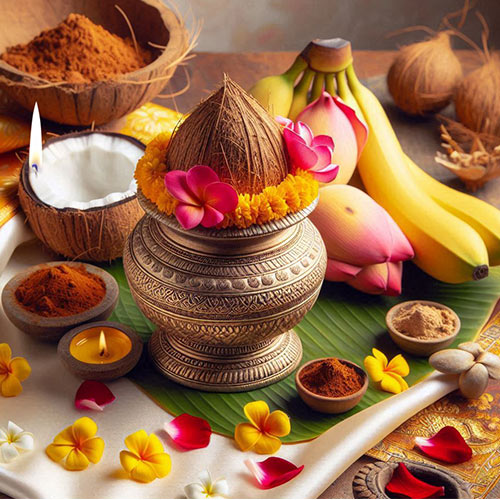
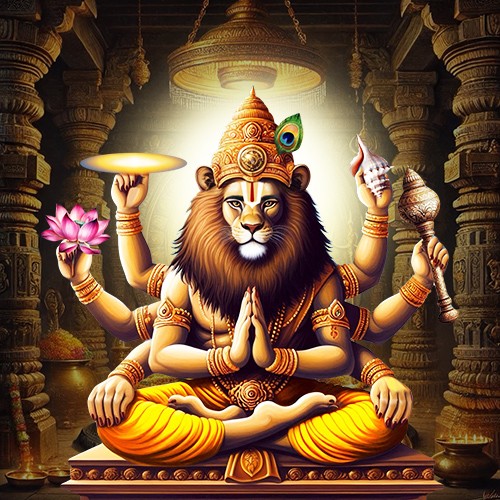
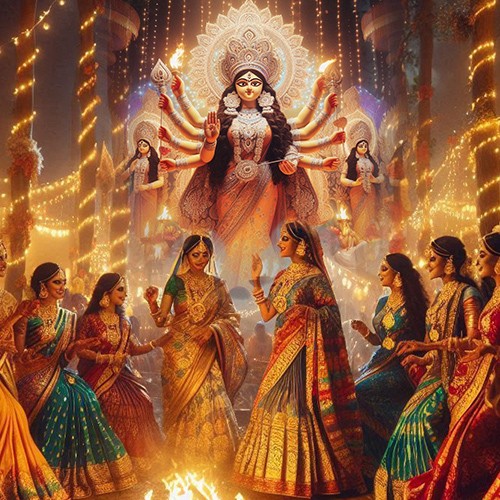
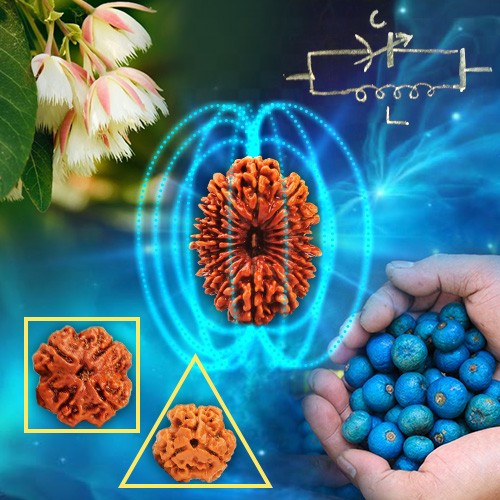


.jpg)
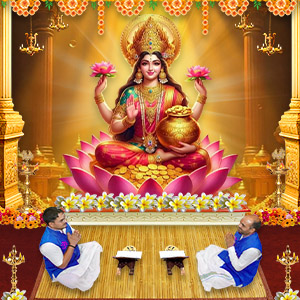

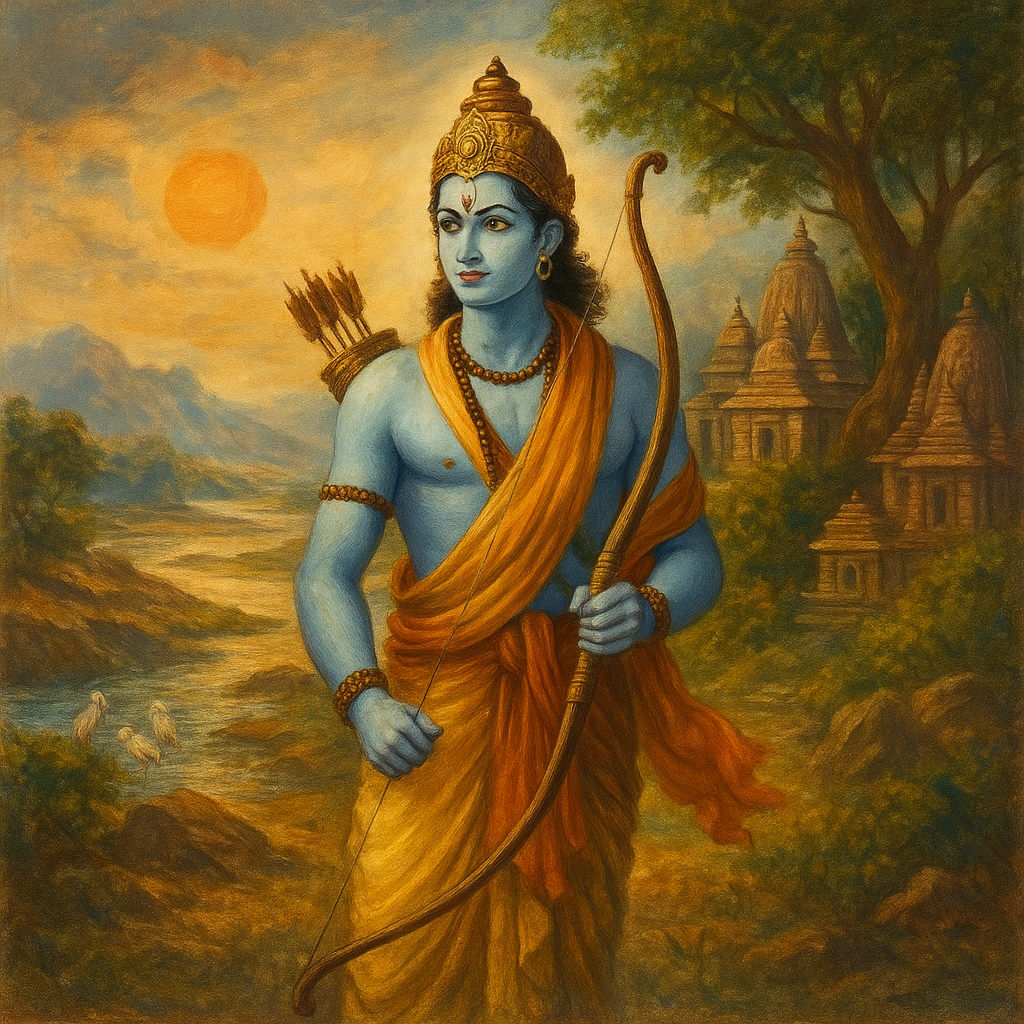
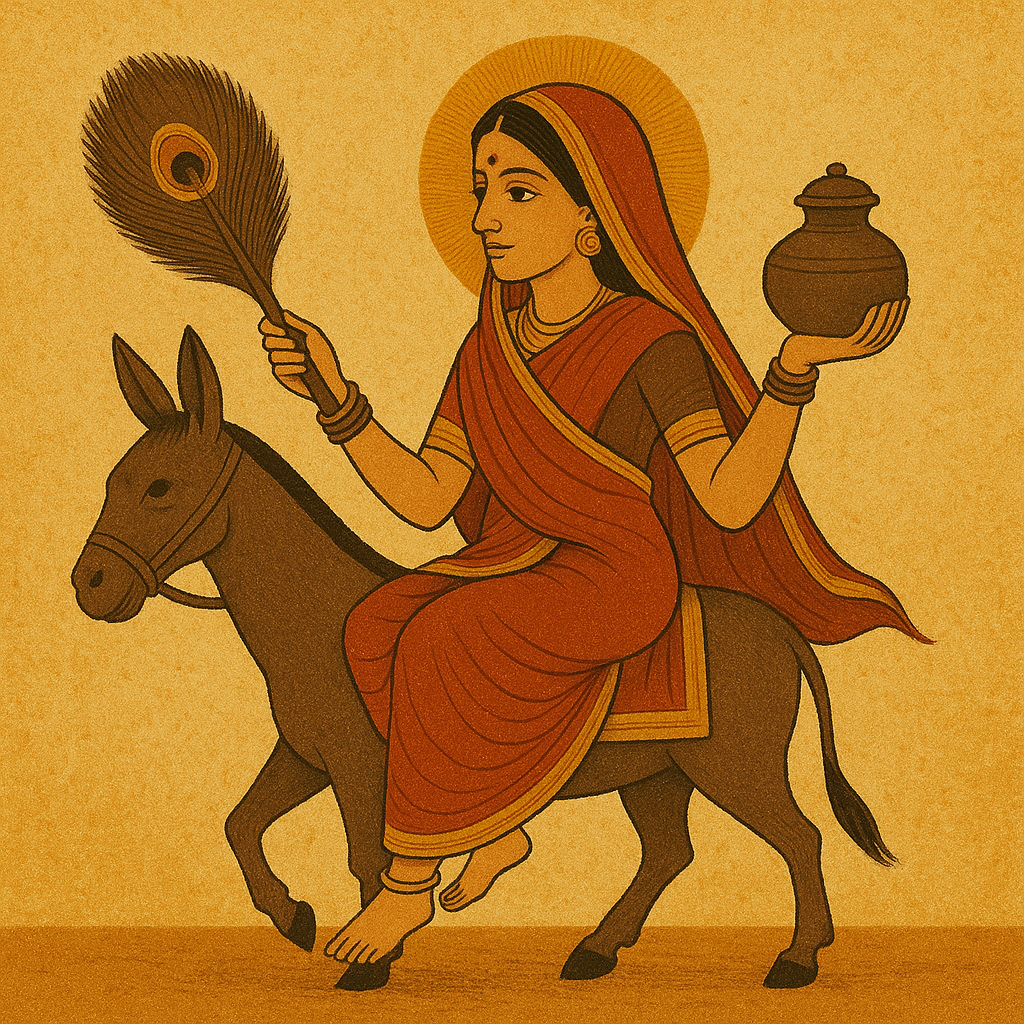
Comments 0
Leave your thought here